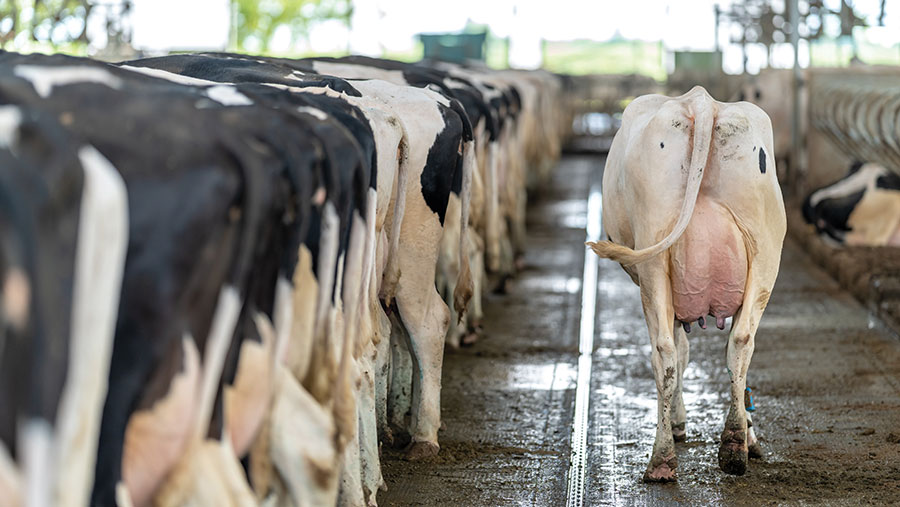Advice on cleaning teats with sufficient let-down for milking
 ©Edojob/Adobe Stock
©Edojob/Adobe Stock Medicated teat wipes and laundered udder cloths have revolutionised teat cleaning in the parlour. But convenience and quickness can sometimes overtake the need to allow sufficient let-down time before attaching clusters.
This is particularly true during winter when most herds are housed and it is even more important to remove organic matter, according to independent milking machine consultant John Baines.
He says that while commercial wipes and cloths may be preferred to rough paper towel, their cleaning effectiveness is not guaranteed to stimulate milk let-down. This requires time.
See also: Making the most of milk lag times
“Milk let-down is important for efficient milking and minimising teat damage. Low- or no-flow at the start of milking is as damaging as overmilking at the end.
“Proper stimulation gives far higher peak milk flow, shorter cup-on time and fewer teat problems,” he says.
Timing
Automated teat-cleaning brushes help put milking operators into a good routine.
However, poor brush maintenance and a focus on speed, without using the air-dry facility, (where brushes spin without liquid to dry the teat) can also mean that cups are attached to wet teats, before let-down occurs, and without sufficient disinfectant contact time.
Ideally, John says there should be 10-15 seconds of physical contact cleaning time, sufficient to trigger the release of oxytocin.
“If people wipe teats and [then] leave 60-90 seconds before attaching clusters, this will promote milk let-down and maximise exposure time for pre-milking disinfectants – which usually need at least 30 seconds,” he explains.
Choosing an udder preparation method depends on an individual farm’s approach to price and sustainability – disposable or washable cloths, or an automatic teat brush.
Whichever, it is important to do it correctly. “Human nature means we cut corners – that’s why protocols help,” he says.
The starting point is to ensure teats have well-conditioned skin, because this is easier to clean; this means using a post-milking dip containing an effective emollient.
Teats with high levels of hyperkeratosis – rough or very rough orifice rings – are much harder to clean. John advises using one wipe or cloth for each cow, with half of one side for a single teat.
Care of washable cloths
“The laundered cloth, done properly one per cow, washed at a high temperature and replaced every two to three months, is good.
“You must wash them at 90C – and for this, you need an industrial washing machine – because if you can’t hit temperature, you won’t kill the bugs.
“Most people leave the cloths spun dry so they come out damp and may put a teat disinfectant in the machine in place of a fabric conditioner.
“Teat wipes are all right if cows’ teats are pretty clean. They are not for high degrees of soiling. They are practical but can be pricey.”
Bedding and hygiene
Yet good teat preparation will not counteract poor shed hygiene.
John says the focus should be on plenty of dry bedding; cubicles of good construction that control the cow’s position so she does not foul the bed; good ventilation; and air movement.
“Make sure water troughs don’t contaminate adjacent beds and that there is sufficient passageway width to allow cows to reverse from a feed fence without mucking on cubicle beds,” he adds.
Where slurry is scraped to slats, he points out that cow traffic routes should be considered.
He has seen farms where cows exit the parlour and have to walk through slurry back to cubicles, splashing teats and trailing muck on their feet.
Teat cleaning
- Farmers are required by dairy hygiene legislation to remove dirt from teats, udders, flanks and tails
- The aim should be to shift light to moderate amounts of soiling and give good stimulation for milk let-down
- Teat skin is not sterile and in winter housing there is a much higher bacterial load
- Cleaning reduces bacterial load for milk quality and the challenge from mastitis pathogens
Source: John Baines
